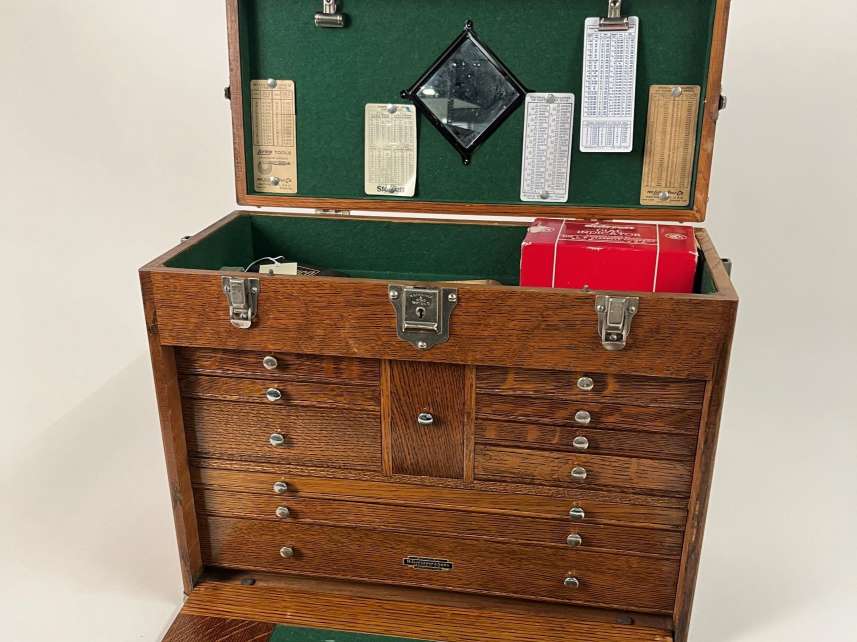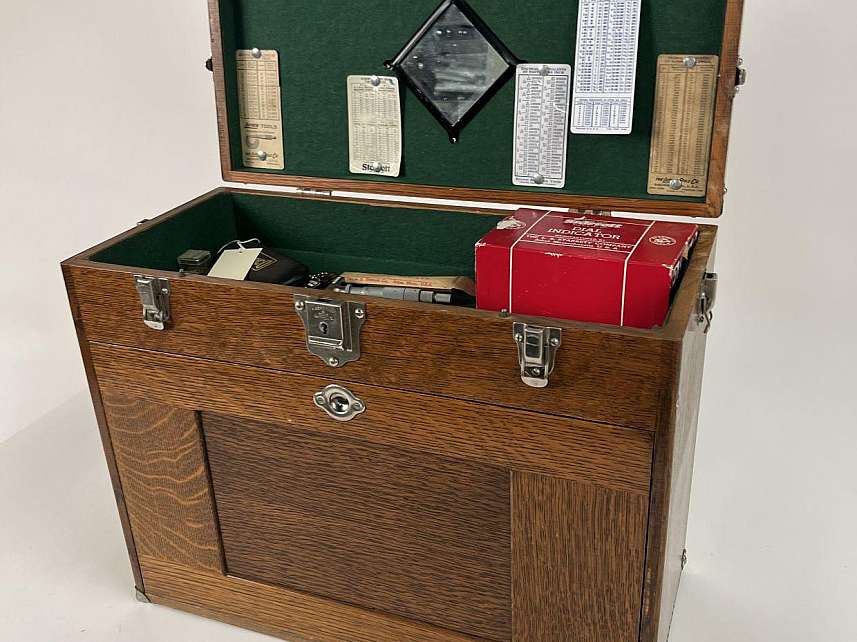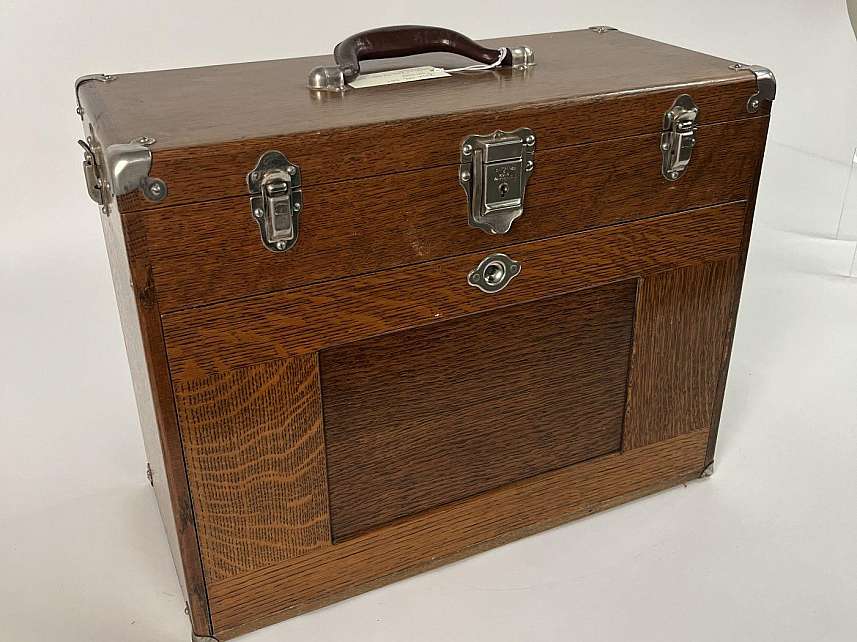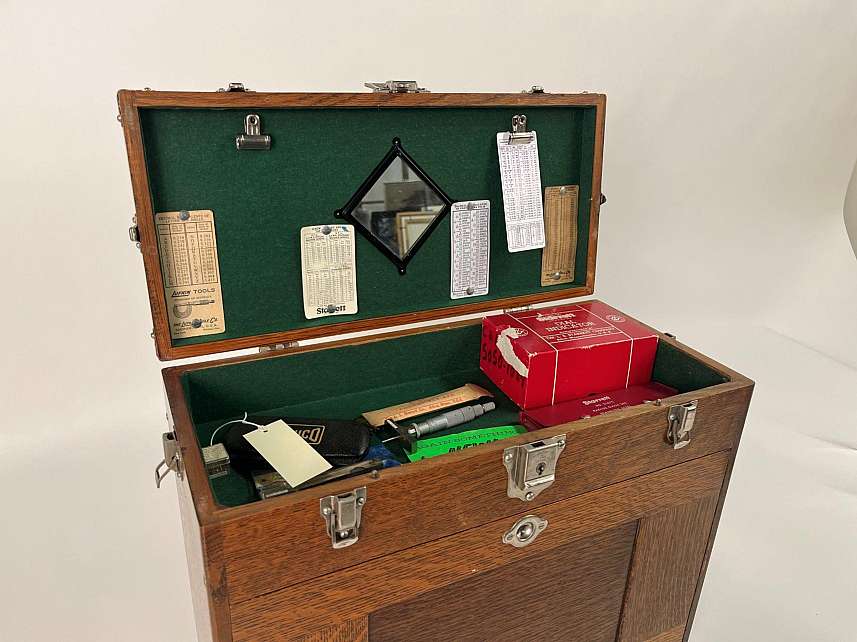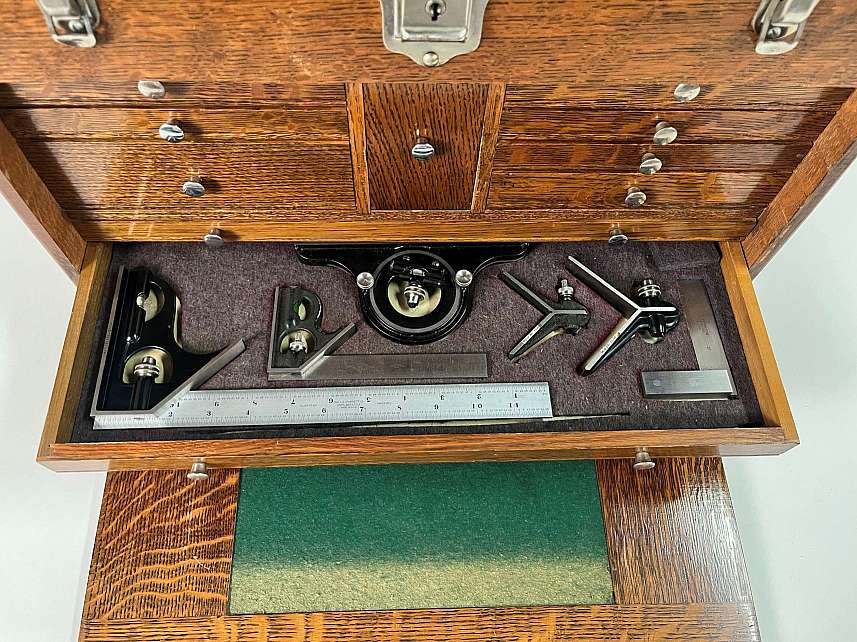Gerstner & Sons Machinist Toolbox Model originally owned by Bud Lewis, who served as lead machinist on the Manhattan Project during World War Two. The Manhattan Project was not the only nuclear weapons program at the time; the British, Germans, and even the Japanese had begun their own research, as well. Britain’s program merged with the United States in 1943, and the Manhattan Project continued with British and US cooperation. Neither Germany nor Japan were close to a viable weapon when the bombs dropped in August 1945.
The Manhattan Project: Tool Case
This section tells of the Manhattan Project, a top-secret government product which produced the deadliest weapon of World War Two.
Overview
German physicists first discovered nuclear fission in December 1938. In 1939, Albert Einstein wrote a letter to President Franklin D. Roosevelt, warning him of the danger of atomic weapons.

A pin awarded to members of the Manhattan Project. US Department of Energy photo
The Advisory Council on Uranium was formed to investigate the possibility of developing an atomic bomb. After the attack on Pearl Harbor in 1941, the Council agreed that an atomic weapon could be built in time to influence the war.
The Manhattan Project was born.
The Manhattan Project was top secret, and the sites for the project were spread across the country. Oak Ridge, Tennessee produced uranium; Hanford, Washington research and produced plutonium; and Alamogordo, New Mexico designed and developed the bomb itself. Although the Project employed around 130,000 people, most of them never knew what they were helping to create. Very few people knew the true purpose of the Manhattan Project. Even Vice President Truman was unaware until FDR’s death in 1945.
A successful test of the atomic bomb at the Trinity Site in New Mexico on 16 July 1945 changed the course of the war, and shaped the future of science and the world.
Tool Case
Exhibit Preview
The Atomic Bomb Exhibit
This exhibit tells the story of the atomic bomb from the development stages to the effects of the bombings on Hiroshima and Nagasaki in August 1945....


